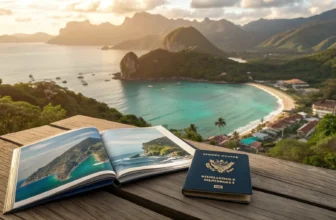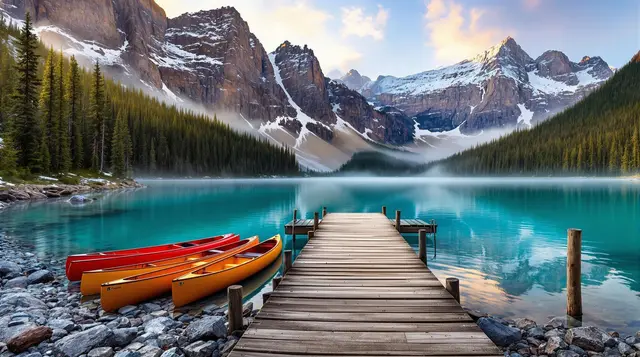
World pulses with breathtaking landscapes, ancient wonders, untamed beauty. Each destination shifts perspectives, stirs souls, leaves travelers forever changed.
Sky ablaze with northern lights. Hush of waves against forgotten shore. Echoes of civilizations lost yet lingering. Moments that root wanderers in time, space, awe. Travel fuels transformation, ignites curiosity, reshapes understanding. Paths less taken, places unseen, journeys waiting beyond horizon.
Eighteen destinations. Unforgettable encounters. Iconic marvels, hidden gems, untamed frontiers. Stories etched in landscapes, experiences carved in memory.
Adventure begins now.
1. Machu Picchu, Peru

Perched high in the Andean mountains, Machu Picchu is a place where time stands still, and history whispers through the mist. As you make your way up the winding trails, the first glimpse of the ancient citadel through the Sun Gate is nothing short of breathtaking. Terraced slopes, intricate stone structures, and panoramic views of the lush Urubamba Valley create a setting that feels almost surreal. Walking through its sacred temples and residential quarters, you can’t help but wonder about the ingenuity of the Incan civilization, who built this marvel without modern tools or wheels.
But Machu Picchu is more than just a historical wonder—it’s an experience. The journey to reach it, whether by the legendary Inca Trail or the scenic Hiram Bingham train, is an adventure that adds to its mystique. Mist drapes over the ruins in the early morning, lending an air of mystery, only to be lifted by golden sunlight revealing a landscape frozen in time. A moment spent here, gazing at the surrounding peaks, is one of profound connection—between past and present, nature and civilization.
Key Practical Information
- Peak/Off-peak seasons: Peak season runs from May to September, offering clear skies but more crowds. October to April is the wet season, but fewer visitors mean a quieter experience.
- Best ways to reach and explore: Inca Trail (4-day trek), Salkantay Trek, or train from Cusco to Aguas Calientes, followed by a shuttle bus up to the ruins.
- Ideal duration of visit: 2-3 days (to explore Cusco, acclimate, and visit Machu Picchu).
- Must-try local experiences: Explore Ollantaytambo, visit Sacred Valley markets, try cuy (guinea pig), and soak in Aguas Calientes hot springs.
- Budget considerations: Entrance fees (
$45), train tickets ($60-$300), guided tours (~$20-$100), and accommodation vary from hostels to luxury stays. - Cultural etiquette tips: Respect the ruins—no climbing on walls. Greet locals with a friendly “Hola” or “Buenos días”.
- Photography opportunities: Sunrise over the ruins, the Sun Gate, Huayna Picchu summit, and llamas grazing against the stone terraces.
2. Santorini, Greece

Santorini is the very definition of dreamlike beauty—a crescent-shaped island where whitewashed buildings spill down volcanic cliffs, and sapphire-blue waters shimmer in the sun. Strolling through Oia’s labyrinthine alleys feels like stepping into a fairytale, with bougainvillea-draped terraces and the scent of fresh seafood wafting through the air. As the day winds down, the sky erupts in fiery hues of orange and pink, casting an ethereal glow over the caldera, a spectacle that draws visitors from around the world.
But beyond the picture-perfect scenes, Santorini has a soul that invites deeper exploration. Ancient ruins at Akrotiri, known as the “Minoan Pompeii,” hint at a civilization lost to time, while the island’s volcanic legacy is evident in the stark contrasts of Red Beach and Black Sand Beach. A day spent sailing the caldera—stopping at hot springs and hidden coves—offers a sense of serenity that’s hard to match.
Key Practical Information
- Peak/Off-peak seasons: June to September is peak season with warm weather but high prices. April-May & October offer a quieter experience with mild weather.
- Best ways to reach and explore: Fly into Santorini (Thira) Airport, take ferries from Athens or other Cycladic islands, and explore via rental ATV, bus, or boat tours.
- Ideal duration of visit: 3-5 days (enough to explore the main villages and beaches).
- Must-try local experiences: Visit Pyrgos village, hike from Fira to Oia, explore volcanic hot springs, and try a Greek cooking class.
- Budget considerations: High-end but flexible—luxury cave hotels ($300+), budget stays ($50+), meals from $10 to $100.
- Cultural etiquette tips: Dress modestly when visiting churches, greet with “Kalimera” (Good morning), and tip 5-10% at restaurants.
- Photography opportunities: Oia sunsets, blue-domed churches, cliffside infinity pools, and the caldera from a catamaran.
3. Great Barrier Reef, Australia

Stretching over 1,400 miles, the Great Barrier Reef is Earth’s most dazzling underwater spectacle—a living mosaic of coral, marine life, and crystal-clear waters. Whether snorkeling or diving, the sheer vibrancy of this underwater kingdom is mesmerizing: neon-colored fish dart through coral gardens, while sea turtles glide effortlessly, and, if you’re lucky, a majestic manta ray might drift into view.
Beyond the underwater adventures, the reef offers breathtaking experiences above the waves. Take a scenic flight over Heart Reef, where the reef naturally forms a perfect heart shape, or hop on a glass-bottom boat to witness the marine magic without getting wet. Island retreats like Whitsundays or Lady Elliot Island offer secluded escapes, where the only soundtrack is the gentle lapping of waves.
Key Practical Information
- Peak/Off-peak seasons: June to October offers calm seas and great visibility; November to May is warmer but includes stinger season (protective suits recommended).
- Best ways to reach and explore: Fly into Cairns or Hamilton Island, then take reef cruises, liveaboard boats, or scenic flights.
- Ideal duration of visit: 4-7 days (to explore different reefs and islands).
- Must-try local experiences: Scuba diving, snorkeling with turtles, taking a seaplane over Heart Reef, and staying on a floating pontoon.
- Budget considerations: Tours range from $100-$500, luxury island stays cost $300+, budget hostels are available in Cairns.
- Cultural etiquette tips: Reef-safe sunscreen is a must, avoid touching coral, and respect marine life.
- Photography opportunities: Aerial shots of Heart Reef, underwater coral landscapes, and sunsets over Whitsundays.
4. Petra, Jordan

Hidden within the rugged canyons of southern Jordan, Petra is a city carved from rose-red rock, a place where ancient Nabataean ingenuity meets breathtaking natural beauty. The journey begins with a walk through the Siq, a narrow, winding gorge that builds anticipation with every step. Suddenly, the towering façade of Al-Khazneh (The Treasury) emerges, its intricate details bathed in golden light—a sight so striking it feels otherworldly.
Beyond the Treasury, Petra unfolds as a vast archaeological wonder, with tombs, temples, and stairways leading to dizzying heights. The climb to the Monastery (Ad Deir) rewards travelers with panoramic views, while a quieter moment at the Royal Tombs reveals the grandeur of a civilization lost to time. As the sun dips below the horizon, the city takes on an ethereal glow, and the Petra by Night experience, with flickering candles illuminating the Siq, feels like stepping into an ancient dream.
Key Practical Information
- Peak/Off-peak seasons: Spring (March-May) and Fall (September-November) offer pleasant temperatures; summers are scorching, and winters can be chilly.
- Best ways to reach and explore: Fly into Queen Alia International Airport (Amman), drive or take a bus to Wadi Musa, and explore on foot or by donkey/camel.
- Ideal duration of visit: 2-3 days (enough to explore Petra’s main sites and surrounding trails).
- Must-try local experiences: Petra by Night, climb to the Monastery, visit Little Petra, and enjoy Bedouin tea in the caves.
- Budget considerations: Entry fee ($70 for a one-day pass), local guides ($50+), budget hotels ($50) to luxury resorts ($200+).
- Cultural etiquette tips: Dress modestly, greet with “As-salamu alaykum”, and avoid public displays of affection.
- Photography opportunities: Treasury at sunrise, Monastery at sunset, camel silhouettes, and candlelit Petra by Night.
5. Kyoto, Japan

Kyoto is the heart of traditional Japan, where history and nature intertwine in a harmonious dance. Walking through Gion, the city’s geisha district, feels like traveling back in time—cobbled streets lined with wooden machiya houses, delicate lanterns glowing softly, and the occasional glimpse of a kimono-clad figure slipping into a teahouse. The allure of Kyoto lies in its balance of serenity and grandeur, from the golden splendor of Kinkaku-ji (Golden Pavilion) to the torii-lined pathways of Fushimi Inari Shrine.
In spring, cherry blossoms transform the city into a pink wonderland, while autumn paints the temples in fiery hues of red and orange. A quiet moment at Ryoan-ji’s Zen rock garden, listening to the rustle of leaves and distant temple bells, captures Kyoto’s essence—a place where simplicity and beauty reign supreme. Whether savoring matcha in a traditional tea ceremony or strolling through bamboo groves in Arashiyama, Kyoto offers an experience that lingers long after you leave.
Key Practical Information
- Peak/Off-peak seasons: Spring (March-April, for cherry blossoms) and Autumn (October-November, for foliage) are the most scenic; summer is humid, and winter is peaceful but chilly.
- Best ways to reach and explore: Fly into Kansai International Airport (Osaka), take the Shinkansen bullet train from Tokyo (~2.5 hours), and explore via buses, bikes, or on foot.
- Ideal duration of visit: 4-5 days (to fully experience temples, gardens, and cultural experiences).
- Must-try local experiences: Tea ceremony, stay in a ryokan (traditional inn), visit a kaiseki restaurant, and explore the Sagano Bamboo Forest.
- Budget considerations: Temple entry fees ($3-$6 each), budget ryokans ($50), luxury stays ($300+), and food from street snacks ($5) to kaiseki dining ($150+).
- Cultural etiquette tips: Bow when greeting, remove shoes before entering homes/temples, and avoid loud conversations in public.
- Photography opportunities: Golden Pavilion in the morning, Arashiyama Bamboo Grove, torii gates of Fushimi Inari, and cherry blossoms along the Philosopher’s Path.
6. Grand Canyon, USA
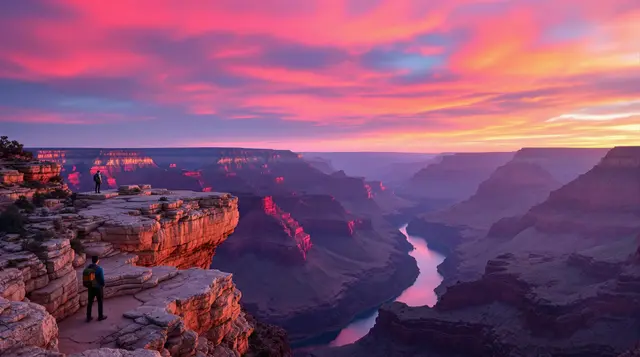
For many, the Grand Canyon is a place to admire from the rim, a vast chasm of layered rock sculpted by time. But its true magic lies in venturing beyond the viewpoints—hiking into the depths, feeling the scale of the canyon shift with every step. Sunrise from Yaki Point paints the cliffs in soft gold, while at dusk, the sky ignites in shades of violet and crimson. The silence in the canyon is profound, broken only by the distant call of a raven or the rustling of the Colorado River far below.
One of the most transformative experiences is tackling the Bright Angel Trail at dawn, descending through millions of years of geological history, each rock layer a time capsule. For the adventurous, rafting the Colorado River is a once-in-a-lifetime journey, where towering walls close in, revealing secret waterfalls and ancient petroglyphs. And for those who seek solitude, the lesser-visited North Rim offers an untouched, almost spiritual side of the canyon, where mule deer roam freely and the views stretch endlessly.
Key Practical Information
- Best alternative experiences: Take a helicopter tour over the canyon, camp under the stars at Havasu Falls, or explore the dramatic Toroweap Overlook.
- Avoiding the crowds: The South Rim is busiest from May to September; visit in early spring or late fall for cooler weather and fewer people.
- How to explore: Free shuttles run along the South Rim, but for a deeper experience, consider hiking, mule rides, or river rafting.
- Best short hikes: Ooh Aah Point for a quick but epic view, or Skeleton Point for a half-day adventure.
- Budget considerations: Park entrance is $35 per vehicle, with affordable camping options or luxury lodges at the rim.
- Photography moments: Capture the river winding through the canyon at Desert View Watchtower, or the Milky Way above the cliffs at Mather Point.
7. Bora Bora, French Polynesia
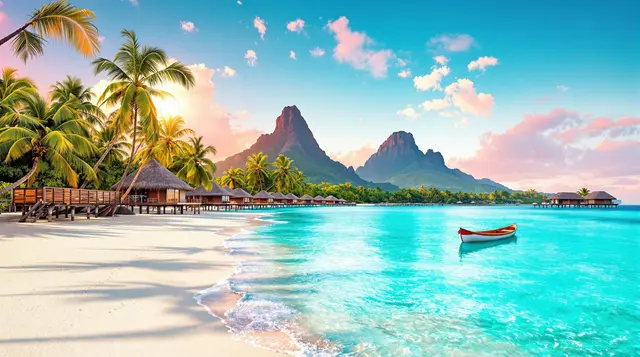
While Bora Bora is famous for its overwater bungalows and impossibly blue lagoons, its real essence is found beyond luxury resorts. The heart of the island is Mount Otemanu, a rugged volcanic peak that looms over the landscape, inviting the curious to explore. Unlike many assume, Bora Bora isn’t just for honeymooners—locals add vibrancy with their music, dance, and Polynesian traditions, making every sunset feel like a celebration.
One of the island’s most unforgettable moments is swimming with sharks and rays in the shallows of Lagoonarium—a thrilling yet serene experience that redefines adventure. Kayaking to a remote motu (islet), where the only footprints in the sand are your own, reveals a side of Bora Bora untouched by tourism. And for those willing to venture inland, secret World War II bunkers tell stories of an island with history beyond its postcard-perfect beaches.
Key Practical Information
- Best way to explore: Rent a bike or a buggy to circle the island, stopping at hidden beaches and local fruit stands.
- Beyond the resorts: Visit Vaitape Market for fresh seafood and handmade pareos, or join a local dance class to experience Polynesian culture.
- Best snorkeling spots: Coral Gardens, Motu Tapu, and the shark-filled waters of To’opua.
- When to go: May to October is dry season, while November to April brings rain but fewer crowds.
- Budget tips: While luxury dominates, budget-friendly guesthouses and local eateries serve delicious fresh poisson cru (raw fish salad).
- Photography moments: Capture the sunset reflecting off Mount Otemanu, the crystal-clear water of Matira Beach, or the silhouette of palm trees against the lagoon.
8. Serengeti National Park, Tanzania

The Serengeti isn’t just a safari destination; it’s a living, breathing epic—a stage for one of nature’s greatest spectacles, the Great Migration. Each year, over two million wildebeest and zebras move across the plains in search of greener pastures, braving crocodile-infested rivers and prowling lions. But beyond the migration, the Serengeti holds quieter, equally magical moments—watching a family of elephants gently nudge their young across the golden savanna, or hearing the deep, guttural roar of a lion under the starlit sky.
For a perspective few experience, a hot air balloon safari at dawn reveals the sheer vastness of the land, where herds stretch for miles, and the first rays of sunlight set the grasses ablaze with color. Away from the central tourist routes, the Ndutu region offers an intimate look at predator-prey interactions, while the remote Northern Serengeti provides a more exclusive experience, far from the crowds.
Key Practical Information
- When to go: June to October for the Great Migration river crossings; December to March for calving season with high predator activity.
- Best way to explore: Guided game drives in open-roof Land Rovers, or hot air balloon safaris for an aerial view.
- Beyond the Big Five: Cheetahs sprinting through the grasslands, endangered wild dogs, and secretive leopards in the kopjes.
- Where to stay: Budget-friendly camping, luxury lodges like Four Seasons Serengeti, or mobile tented camps that follow the migration.
- Cultural connection: Visit a Maasai village to learn about their way of life, traditions, and warrior dances.
- Photography moments: A lone acacia tree at sunset, a lioness with her cubs, or the dust kicked up by stampeding wildebeest.
9. Banff National Park, Canada

Banff is more than just turquoise lakes and rugged mountains—it’s a playground for adventurers who crave both serenity and adrenaline. Early mornings by Lake Louise feel like stepping into a dream, with mist rolling over the water and canoes gliding across its mirror-like surface. But for those willing to step beyond the postcard views, hidden alpine trails and backcountry lodges offer a sense of raw wilderness that few take the time to experience.
Winter transforms Banff into a snow-draped wonderland, where skiing at Sunshine Village or soaking in the Banff Upper Hot Springs beneath falling snow creates an entirely different experience. Meanwhile, the lesser-known Peyto Lake Overlook offers jaw-dropping glacier-fed waters with fewer crowds than its more famous counterparts.
Key Practical Information
- Best time to visit: Summer (June-August) for hiking, Winter (December-February) for skiing and frozen lakes.
- Hidden gems: Johnston Canyon’s frozen waterfalls, the Plain of Six Glaciers Tea House, and Vermilion Lakes at sunrise.
- How to get around: Rent a car for flexibility or use the Roam transit buses that connect major attractions.
- Budget options: Park passes (~$10), affordable hostels in Banff town, and free hiking trails with world-class views.
- Must-try local dish: Bison burgers or a maple-glazed salmon dinner at a cozy mountain lodge.
- Photography moments: The Northern Lights over Lake Minnewanka, Moraine Lake at sunrise, or a grizzly bear sighting from a safe distance.
10. Great Wall of China, China

While the Great Wall of China is a must-see, the real adventure lies in exploring its less crowded, wilder sections. The restored areas near Beijing offer breathtaking panoramas, but the untouched Jiankou or Simatai sections, where the wall crumbles into the mountains, evoke the true spirit of its ancient past.
A truly immersive experience is camping overnight on the wall, watching the sunrise paint the landscape in soft pinks and golds. Or, for a deeper cultural connection, visiting during a Chinese festival, when locals gather for celebrations, turns the historic monument into a living part of the present.
Key Practical Information
- Best time to visit: Spring (April-May) and Fall (September-November) for clear skies and mild temperatures.
- Hidden spots: Jiankou (for rugged adventure), Gubeikou (untouched history), and Huanghuacheng (with a lakeside view).
- Getting there: Trains and buses from Beijing, with private tours offering off-the-beaten-path hikes.
- Must-try local food: Beijing roast duck after a long trek.
- Photography moments: Aerial drone shots of the winding wall, misty sunrises, and the wall draped in autumn colors.
- Budget considerations: Entrance fees vary (~$6-$15), while guided hikes and overnight tours offer deeper experiences.
11. Antarctica – The Last Frontier of Earth
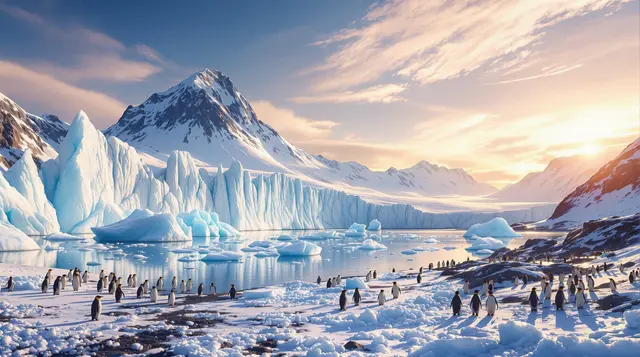
Most travelers dream of warm beaches and bustling cities, but Antarctica offers something entirely different—pure, untouched wilderness. A journey here is an exercise in perspective, where towering icebergs, vast emptiness, and complete silence make you feel both insignificant and deeply connected to the planet. The real magic is the wildlife: thousands of penguins waddling across icy shores, seals basking on floating ice sheets, and the eerie sight of a humpback whale surfacing through the frigid waters.
For those lucky enough to experience it, Antarctica isn’t just a destination; it’s an awakening. The feeling of stepping onto the frozen continent, crunching snow underfoot, and watching the sky shift into shades of endless twilight is beyond surreal. Few places remind us so powerfully of nature’s fragility and strength.
Key Practical Information
- Best Time to Visit: November to March (Antarctic summer with 24-hour daylight)
- How to Get There: Expedition cruises from Ushuaia, Argentina, or fly-cruise options from Chile
- Wildlife Highlights: Emperor penguins, orcas, leopard seals, and massive albatrosses
- Budget Considerations: Cruises start at $7,000-$15,000, but last-minute deals can reduce costs
- Unique Experiences: Polar plunge into icy waters, camping overnight on the ice, or kayaking past icebergs
- Photography Tips: Capture the deep blues of the icebergs and the golden glow of the midnight sun
- Sustainability Tip: Travel with eco-conscious tour operators to minimize environmental impact
12. Taj Mahal, India – A Love Story in Marble

While the Taj Mahal is one of the most photographed landmarks in the world, seeing it in person is an emotional experience. It’s not just the flawless symmetry or the shimmering white marble—it’s the love story woven into its walls. Arriving at dawn, when the first light washes over its dome, reveals a quiet, almost sacred atmosphere that no postcard can capture.
Most visitors rush through, but the real magic lies in observing the details—the delicate floral inlays of precious stones, the echoing call to prayer from the nearby mosque, and the way the structure changes color from sunrise to moonlight. Venture beyond the main mausoleum to Mehtab Bagh, a riverside garden offering an uncrowded, reflective view of the Taj, away from the crowds.
Key Practical Information
- Best Time to Visit: October to March for cooler weather; avoid peak midday hours
- How to Avoid Crowds: Arrive at 6 AM for sunrise or visit Mehtab Bagh for a tranquil experience
- Cultural Etiquette: Dress modestly, remove shoes before entering, and respect local customs
- Entry Fees: ~$14 for foreigners; additional ~$3 for access to the main tomb
- Unique Perspective: Take a boat ride on the Yamuna River for a serene view of the Taj
- Photography Tips: Capture the Taj Mahal’s reflection in the water or a close-up of intricate Mughal carvings
- Food to Try: Petha (sweet candy) from Agra, a local specialty not to be missed
13. Venice, Italy – The City of Disappearing Streets
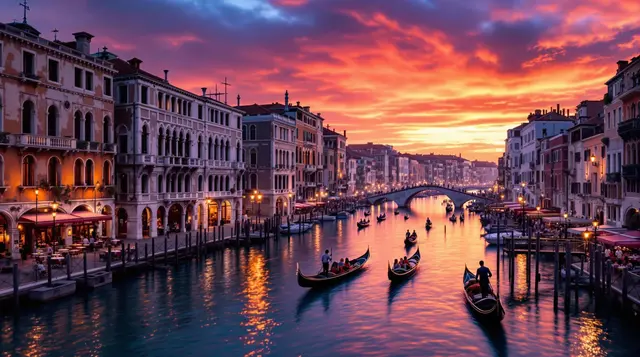
Venice is a floating masterpiece, but its true magic isn’t found in the crowded squares—it’s in the hidden canals, forgotten courtyards, and quiet morning markets. Step away from Rialto Bridge and St. Mark’s Square, and you’ll find locals sipping espresso in tiny cafés, the scent of fresh pastries drifting through the air.
One of the most enchanting ways to experience Venice is by getting lost on purpose. Wander through Cannaregio’s backstreets, where laundry hangs between crumbling palazzos, or visit Libreria Acqua Alta, a bookshop where stacks of novels sit inside gondolas to protect them from flooding. At night, a moonlit gondola ride through the quieter canals reveals a hauntingly beautiful side of the city.
Key Practical Information
- Best Alternative Experiences: Visit Burano’s colorful houses, explore the eerie Poveglia Island, or attend an opera at Teatro La Fenice
- When to Visit: Spring (March-May) or Fall (September-November) for fewer crowds; winter is magical but can be foggy
- How to Get Around: Vaporetto (water bus), traghetto (local gondola ferry), or simply walk and embrace the maze
- Must-Try Local Dish: Bigoli in salsa (thick pasta with anchovy sauce) at a family-run trattoria
- Hidden Gems: The hand-blown glass workshops of Murano or the artisan mask makers of Dorsoduro
- Photography Tip: Capture Venetian reflections in the canals at sunrise before the crowds arrive
- Tourist Warning: Be mindful of Venice’s rising water levels and avoid traveling during Acqua Alta (high tide flooding)
14. Patagonia, Argentina & Chile – The Edge of the World
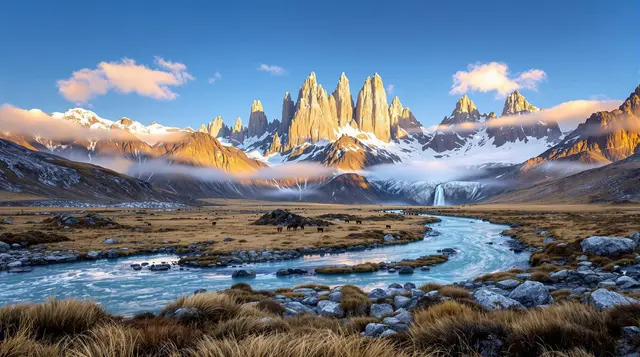
Patagonia is where the Earth feels untamed—a land of jagged peaks, endless glaciers, and wind-swept plains. There’s no single way to define it, because every traveler experiences a different Patagonia. Some come for the W Trek in Torres del Paine, a grueling yet spectacular journey through granite spires and turquoise lakes. Others sail through Glacier Alley, watching ancient ice crash into the sea.
But the most surreal moments in Patagonia are the simple ones: standing beneath the night sky, untouched by light pollution, where the Milky Way burns brighter than you’ve ever seen. Or sharing mate tea with gauchos, Argentina’s rugged cowboys, as they tell stories of a life shaped by the elements.
Key Practical Information
- Best Time to Visit: November to April (Patagonian summer with long daylight hours)
- Where to Go: Torres del Paine (Chile) for trekking, El Chaltén (Argentina) for Fitz Roy hikes, Ushuaia for Antarctic cruises
- How to Explore: Rent a 4×4 vehicle, join a guided trek, or take a scenic Navimag ferry
- Must-Try Food: Cordero al palo (Patagonian lamb slow-roasted over an open fire)
- Budget or Luxury? Budget travelers can camp for free, while luxury lodges like Explora Patagonia offer world-class comfort
- Photography Tips: Long-exposure shots of Torres del Paine at sunrise, or icebergs in Perito Moreno Glacier
- Adventure Beyond Hiking: Kayak past glaciers, go horseback riding with gauchos, or take an off-the-grid trek in Los Glaciares National Park
15. Pyramids of Giza, Egypt – Echoes of an Ancient Civilization

The Pyramids of Giza are not just towering monuments of stone; they are a testament to human ingenuity and the mysteries of the ancient world. Standing before the Great Pyramid of Khufu, one cannot help but feel humbled by the scale and precision of these 4,500-year-old structures. Unlike the crowded postcard images, visiting at sunrise or sunset offers a different perspective—a moment of solitude where history feels alive.
Beyond the famous pyramids, few travelers venture to the Bent Pyramid or the Red Pyramid in Dahshur, where the architectural evolution of ancient Egypt is on full display. Even fewer experience the desert on camelback at twilight, watching the city lights of Cairo flicker in the distance. The pyramids are more than tourist attractions; they are silent guardians of time, standing unshaken through centuries of change.
Key Practical Information
- Best Time to Visit: October to April for cooler temperatures; visit early morning or late afternoon for fewer crowds
- How to Get There: Private taxis or guided tours from Cairo (30-minute drive)
- Beyond the Main Pyramids: Explore the Step Pyramid of Djoser in Saqqara or the lesser-visited pyramids in Dahshur
- Cultural Etiquette: Respect local customs, avoid climbing on the pyramids, and be cautious of persistent vendors
- Budget Considerations: Entry fees start at ~$10, with additional charges to enter the Great Pyramid or take guided tours
- Photography Tips: Capture the pyramids from the Panoramic Point, or visit during golden hour for the best lighting
- Unique Experience: Book a hot air balloon ride over Luxor for an aerial view of ancient wonders
16. Maui, Hawaii, USA – Where Nature and Myth Collide
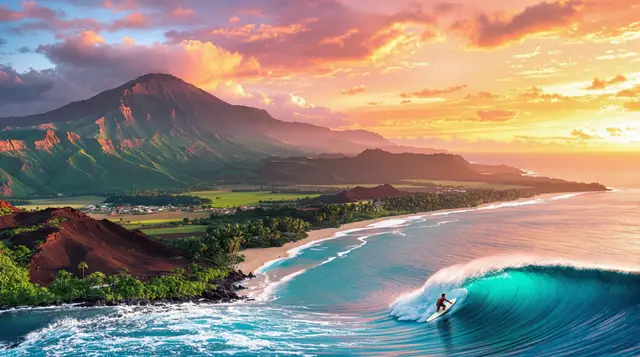
Maui is more than just stunning beaches—it’s an island steeped in Hawaiian mythology, lush landscapes, and the spirit of adventure. Watching the sunrise from Haleakalā Crater, where ancient Hawaiians believed the demigod Māui lassoed the sun, is an unforgettable experience. From here, the island unfolds into a world of contrasts: black sand beaches, bamboo forests, and waterfalls hidden deep within the jungle.
While most visitors stay on the western shores, the true magic lies in the Road to Hāna, a winding journey through rainforests and dramatic coastal cliffs. For a more off-the-grid experience, the less-explored island of Molokini offers some of the best snorkeling in the Pacific, revealing underwater lava formations and vibrant marine life.
Key Practical Information
- Best Time to Visit: April-May and September-November for pleasant weather and fewer tourists
- How to Explore: Rent a car to drive the Road to Hāna, take a helicopter tour, or go island-hopping to nearby Lanai
- Must-See Attractions: Haleakalā National Park, Iao Valley, and the lava fields of La Perouse Bay
- Adventure Activities: Surfing in Ho‘okipa, snorkeling in Molokini, or hiking the Pipiwai Trail through bamboo forests
- Food to Try: Loco moco (rice, hamburger patty, egg, and gravy), poke bowls, and fresh pineapple from a roadside stand
- Photography Tips: Capture the sunrise over Haleakalā, the Seven Sacred Pools at Ohe‘o Gulch, or the contrasting colors of Red Sand Beach
- Cultural Connection: Learn about Hawaiian history at the Bishop Museum or attend a traditional luau
17. Iceland’s Golden Circle – A Land of Fire and Ice

Few places on Earth feel as untamed and otherworldly as Iceland. The Golden Circle is often the first stop for visitors, but its magic lies beyond the well-trodden routes. The moment you step into the raw Icelandic wilderness, whether it’s beneath the thundering power of Gullfoss waterfall or beside a bubbling geyser about to erupt, you feel the pulse of a land still being shaped by nature.
While most stick to the classic Golden Circle route, venturing into Þórsmörk Valley offers an entirely different experience—a dramatic landscape of glaciers, moss-covered lava fields, and hidden caves. For those who crave the surreal, snorkeling in Silfra Fissure, where you can float between two continents, is a must. The real magic of Iceland isn’t just in what you see—it’s in the way the land makes you feel like an explorer from another world.
Key Practical Information
- Best Time to Visit: June-August for midnight sun; September-March for the northern lights
- How to Get Around: Renting a 4×4 vehicle is recommended for off-the-beaten-path locations
- Hidden Gems: Secret Lagoon hot spring, Bruarfoss (a brilliant blue waterfall), and the volcanic landscapes of Landmannalaugar
- Must-Try Experiences: Snorkeling in Silfra Fissure, hiking into Þórsmörk, or snowmobiling on Langjökull Glacier
- Food to Try: Skyr (Icelandic yogurt), lamb stew, or a hot dog from the famous Bæjarins Beztu Pylsur stand in Reykjavik
- Photography Tips: Capture the Northern Lights over Thingvellir, the geyser erupting at Strokkur, or the dramatic cliffs of Dyrhólaey
- Sustainability Tip: Stick to marked trails to protect Iceland’s fragile moss and landscapes
18. Bagan, Myanmar – The Land of a Thousand Temples

Bagan is one of the most underrated wonders of the world, where over 2,000 ancient temples rise from the misty plains. While Angkor Wat often steals the spotlight, Bagan’s charm lies in its sheer expanse—everywhere you turn, another golden stupa or intricate pagoda emerges from the horizon. The best way to experience it? By e-bike at dawn, weaving through dirt paths as the first light sets the temples aglow.
For a completely different perspective, taking a hot air balloon ride over Bagan at sunrise reveals a landscape frozen in time. Beyond the temples, the town itself is home to local lacquerware artisans, bustling markets, and the warm hospitality of the Burmese people. As the sun sets, the golden spires of Bagan shimmer, leaving an imprint on every traveler’s soul.
Key Practical Information
- Best Time to Visit: November to February for cooler weather and clear skies
- How to Get Around: Rent an e-bike for freedom to explore, or take a hot air balloon ride for a breathtaking aerial view
- Must-Visit Temples: Ananda Temple (intricate architecture), Dhammayangyi (Bagan’s largest temple), and Shwesandaw Pagoda (sunset views)
- Cultural Experiences: Visit a traditional lacquerware workshop, take a boat ride on the Irrawaddy River, or witness a monk chanting ceremony
- Budget Considerations: Entrance fee (
$15), e-bike rental ($5/day), and hot air balloon rides ($300) - Photography Tips: Capture the temples emerging from morning mist, the sunset from Shwesandaw, or the reflections of pagodas in the river
- Local Etiquette: Remove shoes before entering temples, dress modestly, and greet locals with a respectful nod


